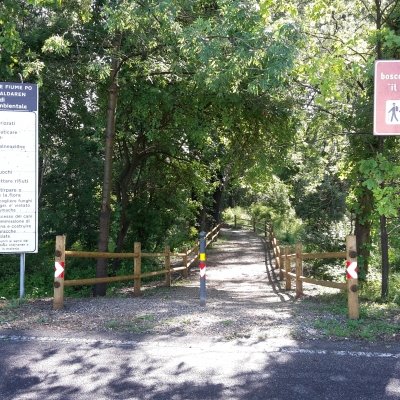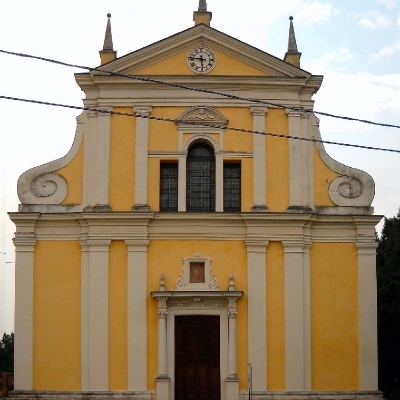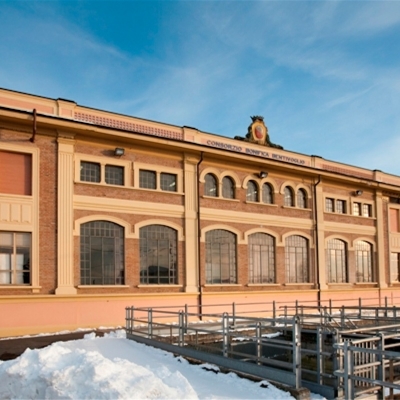Church of Santa Maria della Neve
Already planned in Cornelio Bentivoglio's projects, as a noble chapel, the initial church was octagonal in plan.
The facade was designed by Giovan Battista Aleotti in 1599 and built in 1600.
At the request of Hippolytus, the church became collegiate in 1608, and effective in 1613, with dedication to Santa Maria della Neve, moving the parish from the old church of S. Andrea in the new square. Following this, the church was rebuilt to a longitudinal plan according to the directives of the Counter-Reformation. The façade facing the square fits perfectly into the modular scanning using the space of four spans of the portico. The façade, which is on one floor, is bordered by two pairs of pilasters of giant Doric order, which support a Doric trabeation with triangular pediment; the entrance archway is highlighted by another Doric structure with a broken pediment that frames a Doric window. Under the portico there is a simpler façade without interruptions and with three entrances. The pediment is dominated by five large pyramidal spiers added later due to a static problem. The tympanum is decorated with a bas-relief with the Madonna della Neve by Carlo Pisi at the beginning of the 16th century. XX.
Because of the flood of 1765, which brought severe static damage, the church was rebuilt from 1770 to 1780 by Gian Battista Fattori and decorated from stucco by Arcangelo Scotes. The interior presents a single hall, covered with barrel vaults with three chapels on each side and ends in the raised altar, with a choir in the semi-cylindrical apse. In the chapel of the Bentivoglio family is on the altar the "Annunciation" by Carlo Bononi (1610), Ferrarese painter of the Carracci school. Also worth seeing are the paintings "S. Andrea, San Rocco, S. Sebastiano and the SS. Primo e Feliciano "by the purist painter Carlo Zatti (1844) on the altar of the Community," S. Alberto di Gualtieri and S. Giovanni Nepomuceno "by Clemente Ruta (1742), the" Crucifixion "by Camillo Ricci (circa 1620) arranged in the Torelli-Malaspina chapel.
In the balcony on the entrance is the organ built Agostino Traeri, arrived in Gualtieri in 1784 and restored in 1787 by Andrea Montesani.



